from Boise, ID
from Boise, ID

Adding a privacy wall to your free-standing or attached pergola is quite easy and should take you no more than 1-2 hours. You won't need any speciality tools, either... just a tape measure, level, drill, ladder and chop saw (aka table saw or miter saw).
Our privacy wall kits include all the brackets and hardware you'll need to assemble the privacy wall. You'll just need to purchase your 2x6, 2x4, 6x6 or 4x4 wood locally from a building supply or home improvement store.
You'll need the following simple tools to assemble the privacy wall:
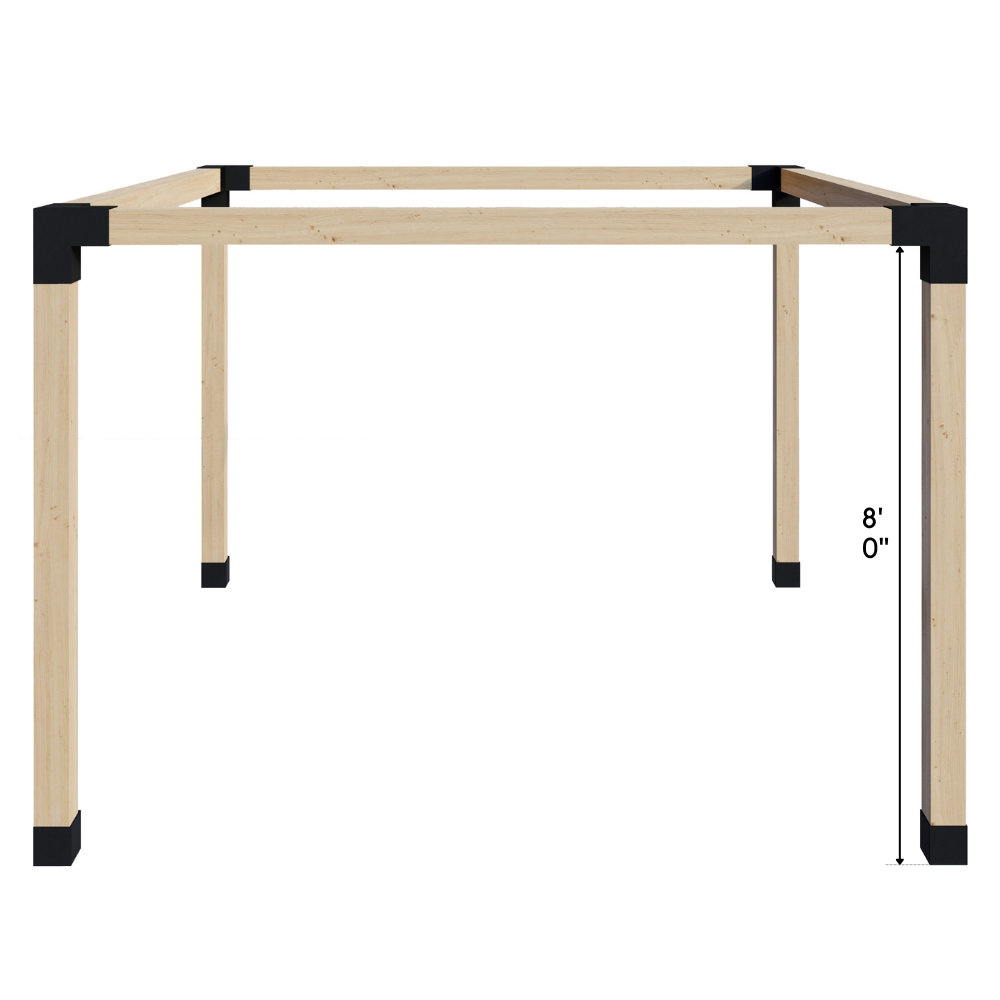
Identify one of the posts to which you will be attaching the privacy wall slats. Measure the distance from the ground to the bottom edge of the roof beam.
For example purposes only, we will assume the distance is 8' 0.0".
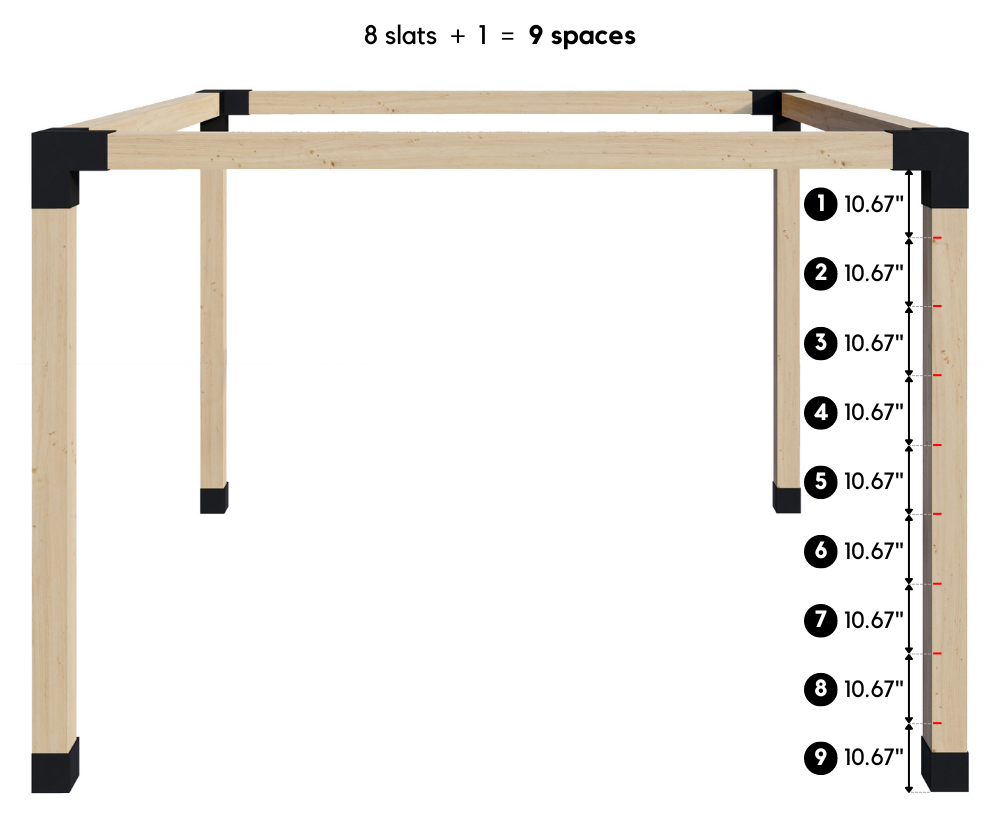
Divide the distance you measured in step 1 by the number of wall slats that will attach to this post plus 1. For example, if there will be 8 wall slats, you would divide by 9 (i.e. 8 wall slats + 1).
Starting at the ground, use a pen/pencil to make marks on the inside (inward-facing side) of the post at the calculated interval. (Note: For illustrative purposes only, these instructional images show the marks on the outside - i.e. outward-facing side - of the post. Don't make your marks here.)
If your calculations are correct, the number of marks you make on the beam will equal the number of wall slats you'll be attaching to the post. These marks represent the center point for each wall slat.
In this example, you'd make a mark every 10.67".
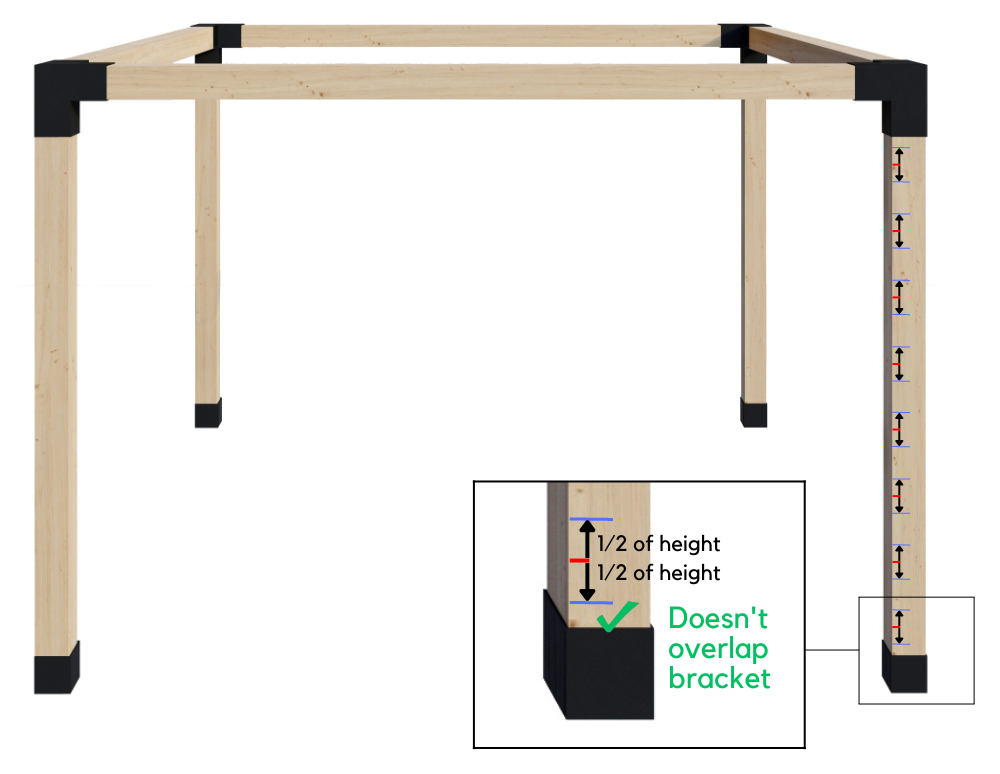
In step 2, you marked the center point for each bracket. In this step, you will mark the top and bottom points for each of the brackets (starting with the mark closest to the ground).
If your wall slats will be either 2x6s or 6x6s, the insert brackets are 5.6" tall. Therefore, the top mark should be 2.8" above the center-point mark and the bottom mark should be 2.8" below it.
If your wall slats will be either 2x4s or 4x4s, the insert brackets are 3.6" tall. Therefore, the top mark should be 1.8" above the center-point mark and the bottom mark should be 1.8" below it.
You should start with the mark closest to the ground to ensure that the base bracket will not interfere with the bottom wall slat. Make a mark on the post either 2.8" (if your wall slats will be 2x6s or 6x6s) or 1.8" (if your wall slats will be 2x4s or 4x4s) below the lowest center-point mark on the post. If this new mark is on the wood post, you're good to go. Continue with making the rest of the top- and bottom-point marks for all of the slats. Then SKIP TO STEP 8. (Steps 4-7 are only necessary IF the bottom mark can't be made on the wood post due to the base bracket being in the way.)
If the bottom-point mark cannot be made on the wood post due to the base bracket being in the way, continue on to step 4.
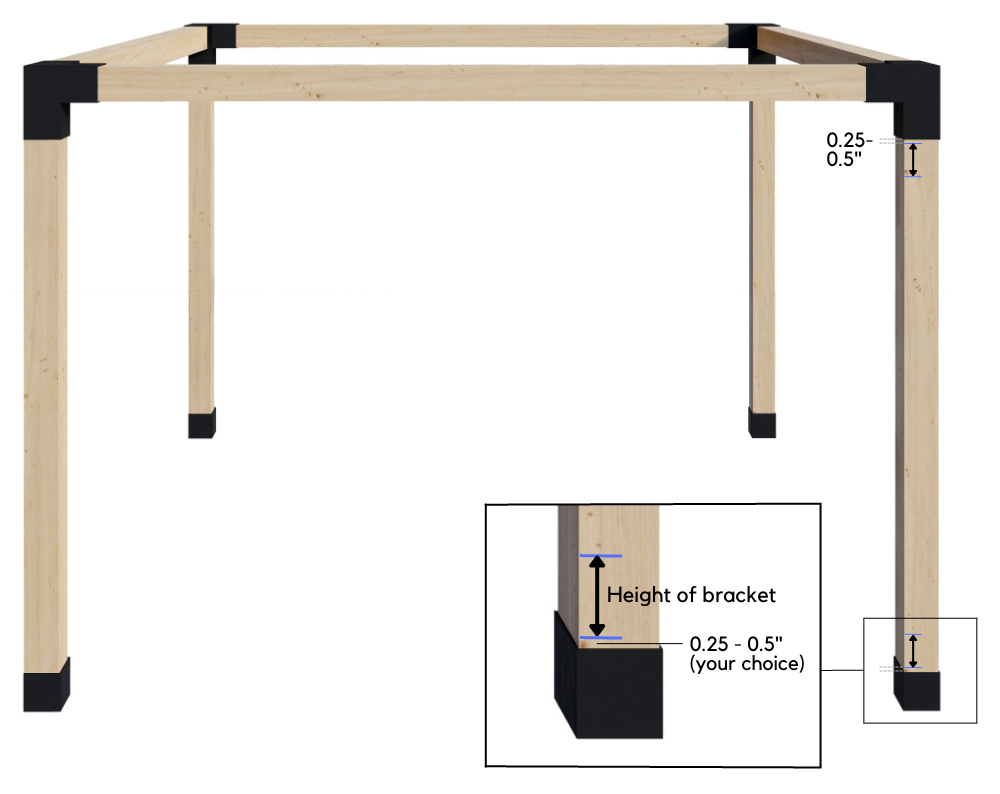
REMINDER: Steps 4-7 are only necessary if the base bracket interfered with the bottom-point mark for the lowest wall slat. (If that is not the case, skip to step 8.)
Erase or X-out the marks you made in step 2 above. You will not be using those marks.
Make a mark on the post just a quarter-to-half inch (0.25 - 0.5") above the base bracket (whatever your preference is). This will be the bottom point of the wall slat.
Then make a 2nd mark (which will be the top point of the wall slat) either 5.6" (if your wall slats will be 2x6s or 6x6s) or 3.6" (if your wall slats will be 2x4s or 4x4s) above the bottom-point mark. These 2 marks indicate where the top and bottom of the lowest wall slat will be.
Now do the same thing at the top of the post (just below the vertical arm). For this top set of marks, the top point should be 0.25" - 0.5" (whichever you did at the bottom) below the top bracket, and then the bottom-point mark should be either 5.6" or 3.6" below that top-point mark. These 2 marks indicate where the top and bottom of the highest wall slat will be.
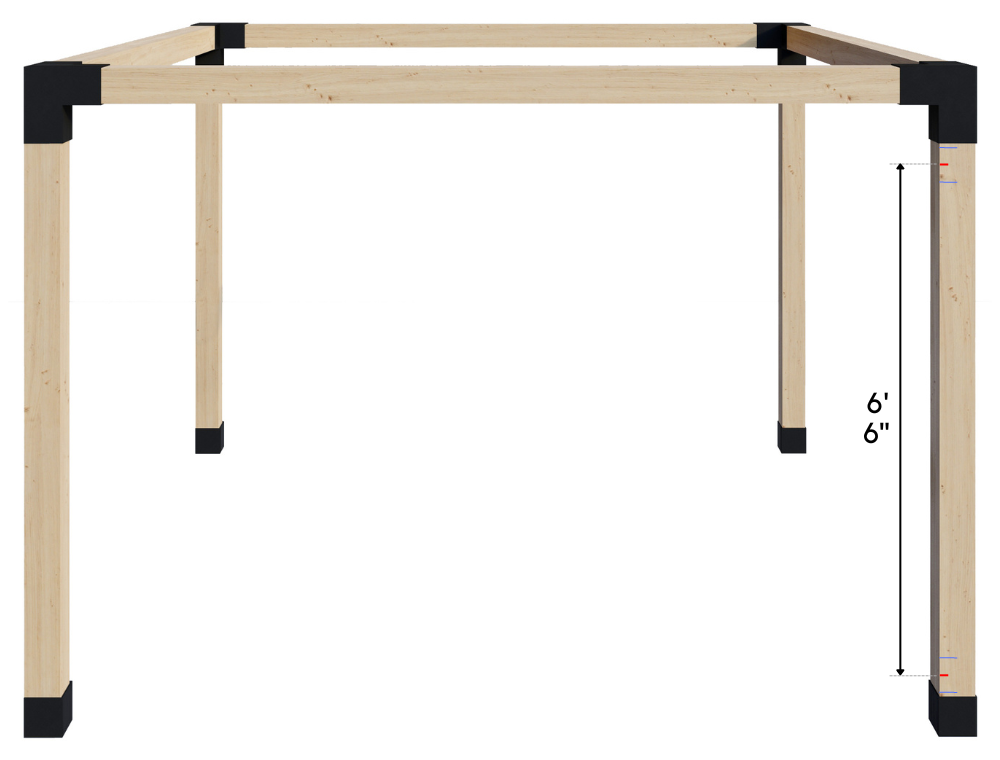
Now make a center-point mark at the midpoint (i.e. middle) of each set of marks.
Now measure the distance between the center-point mark for the top wall slat and the center-point mark for the bottom wall slat.
For example purposes only, we will assume the distance is 6' 6.0".
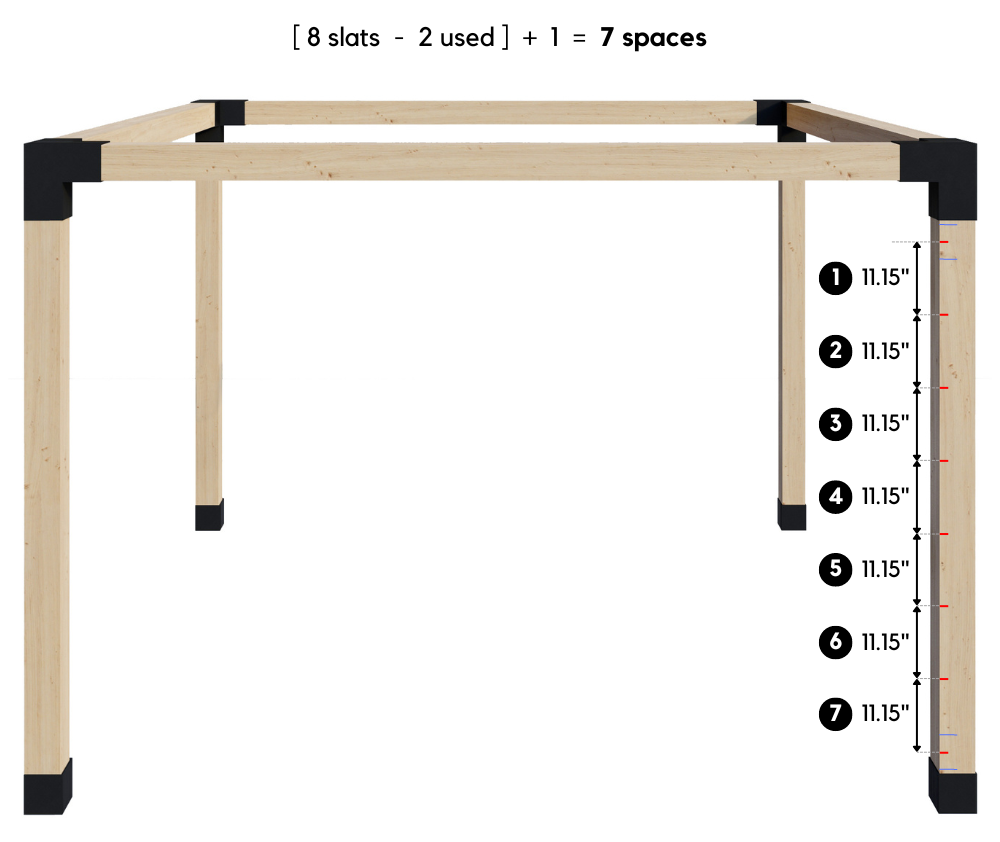
Divide the distance you measured in step 5 by the number of remaining wall slats (which is 2 less than the total number of wall slats, since you've already made markings for the top and bottom wall slats) plus 1. For example, if there will be 8 total wall slats, you would divide by 7 (i.e. 8 total wall slats - 2 wall slats already marked + 1).
Starting at the center-point mark for the lowest wall slat (close to the ground), use a pen/pencil to make marks on the post at the calculated interval. (In this example, you'd make a mark every 11.15".) If your calculations are correct, the total number of center-point marks you make on the post (including the 2 you made in step 5) will equal the total number of wall slats.
These marks represent the center point for each wall slat.
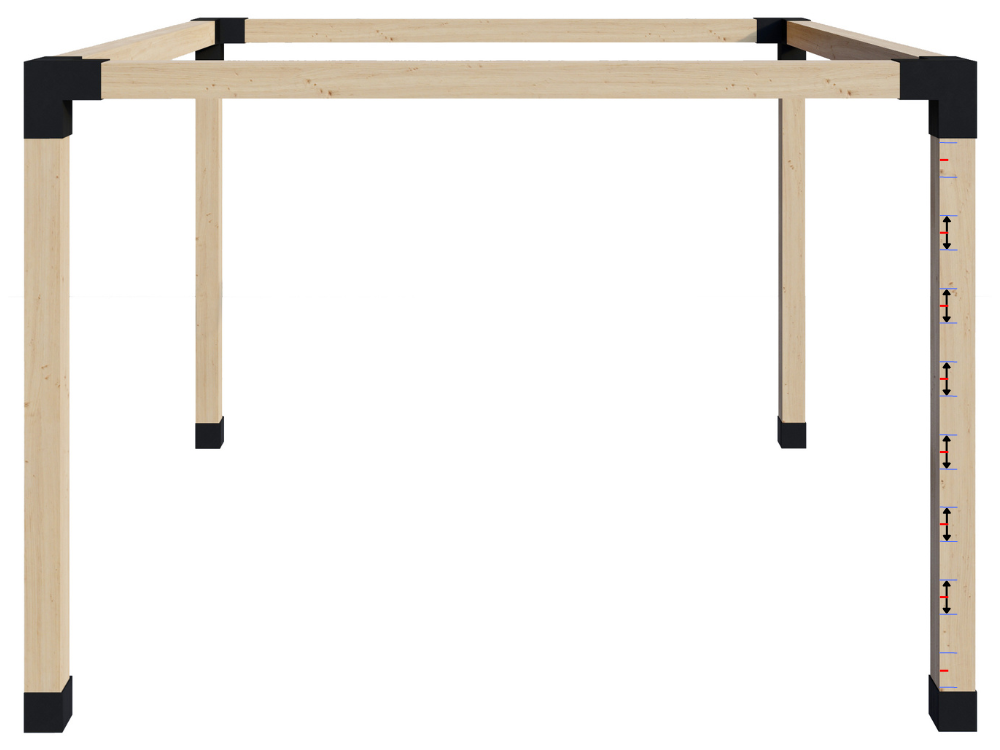
In step 6, you marked the center point for each bracket. In this step, you will mark the top and bottom points for each of the brackets (although you've already made those marks for the top and bottom brackets).
If your wall slats will be either 2x6s or 6x6s, the insert brackets are 5.6" tall. Therefore, the top mark should be 2.8" above the center-point mark and the bottom mark should be 2.8" below it.
If your wall slats will be either 2x4s or 4x4s, the insert brackets are 3.6" tall. Therefore, the top mark should be 1.8" above the center-point mark and the bottom mark should be 1.8" below it.
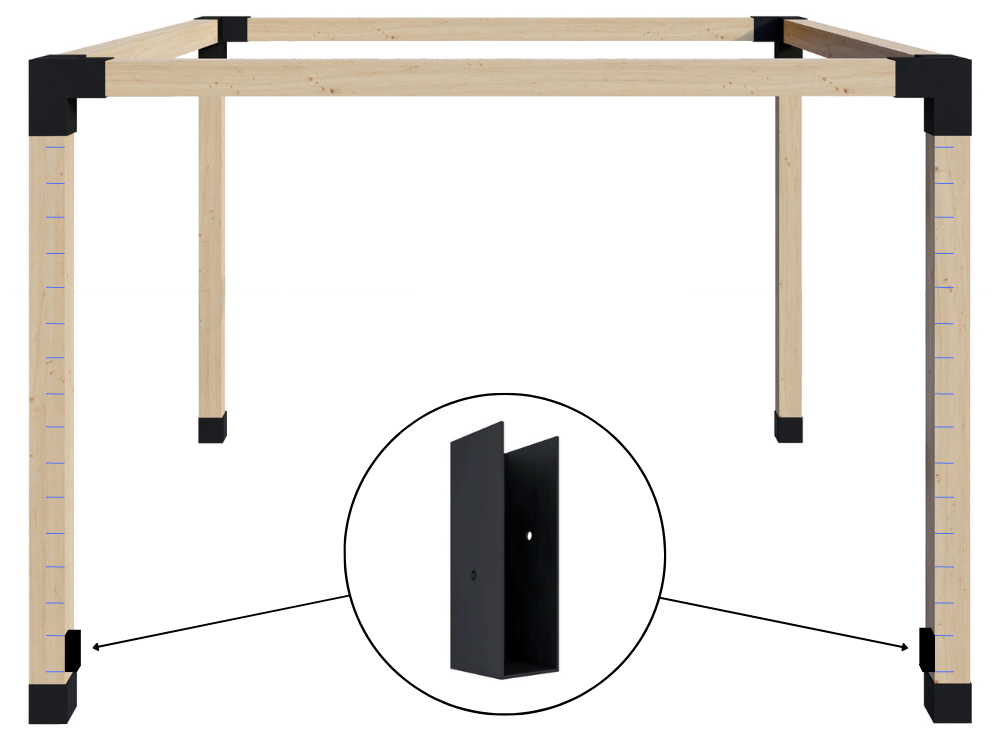
Make corresponding top- and bottom-point markings for each wall slat on the other post to which the wall slats will be secured. To ensure that the wall slats are all level, the best way to make these markings on the other post is to use a string and level. (But you can also make the markings following the same steps you just completed above.)
Once you've made all the markings on the other post, secure the bottom insert brackets to the posts using 2 stainless steel screws per 2x6 or 2x4 insert bracket (or 4 screws per 6x6 or 4x4 insert bracket). Make sure the open side of the bracket is facing up so the wall slats can be slid into place from above.
In the case of 2x6 and 2x4 insert brackets, the ~1.6" width of the bracket obviously won't use the full width of the post. Most customers choose to place the brackets on the outer edge of the posts such that the outside edge of the bracket is flush with the outside edge of the post. If desired, however, you can center the brackets width-wise on the posts or inset them any distance you'd like.
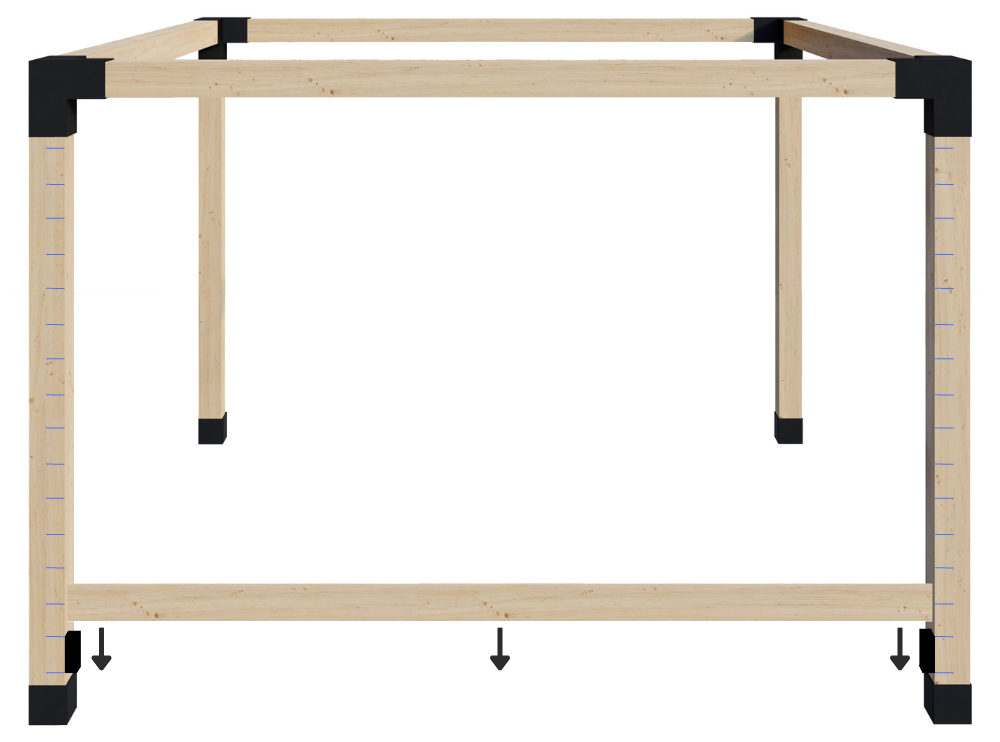
After measuring the exact distance between the inside edges of the vertical posts (and using a chop saw to trim the wall slat down to size if necessary), slide the wall slat into the brackets from above. Then use stainless steel screws (included in your kit) to secure the wall slat to the insert brackets.
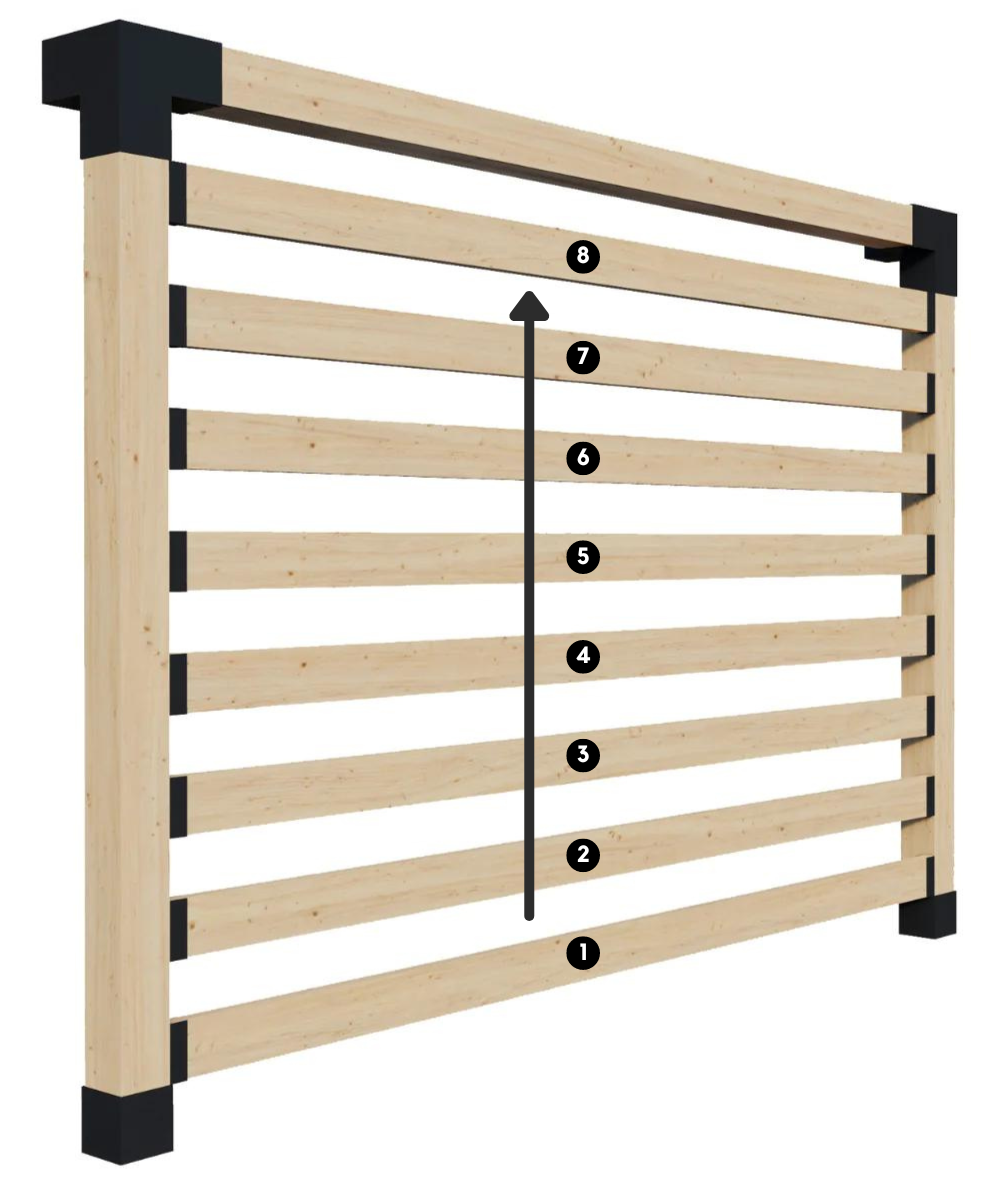
Repeat step 8 (attach an insert bracket to each post) and step 9 (slide in the wall slat from above and secure it to the insert brackets) over and over again, one slat at a time, working your way up from the bottom of the privacy wall to the top.
Once you've secured the top wall slat (which may need to be trimmed a little bit shorter than the other wall slats due to the top brackets), your privacy wall is complete.